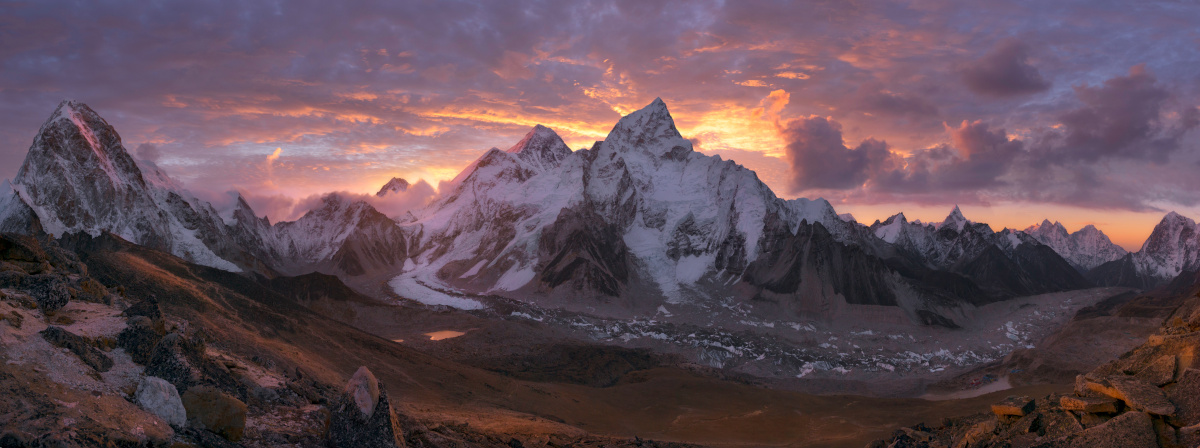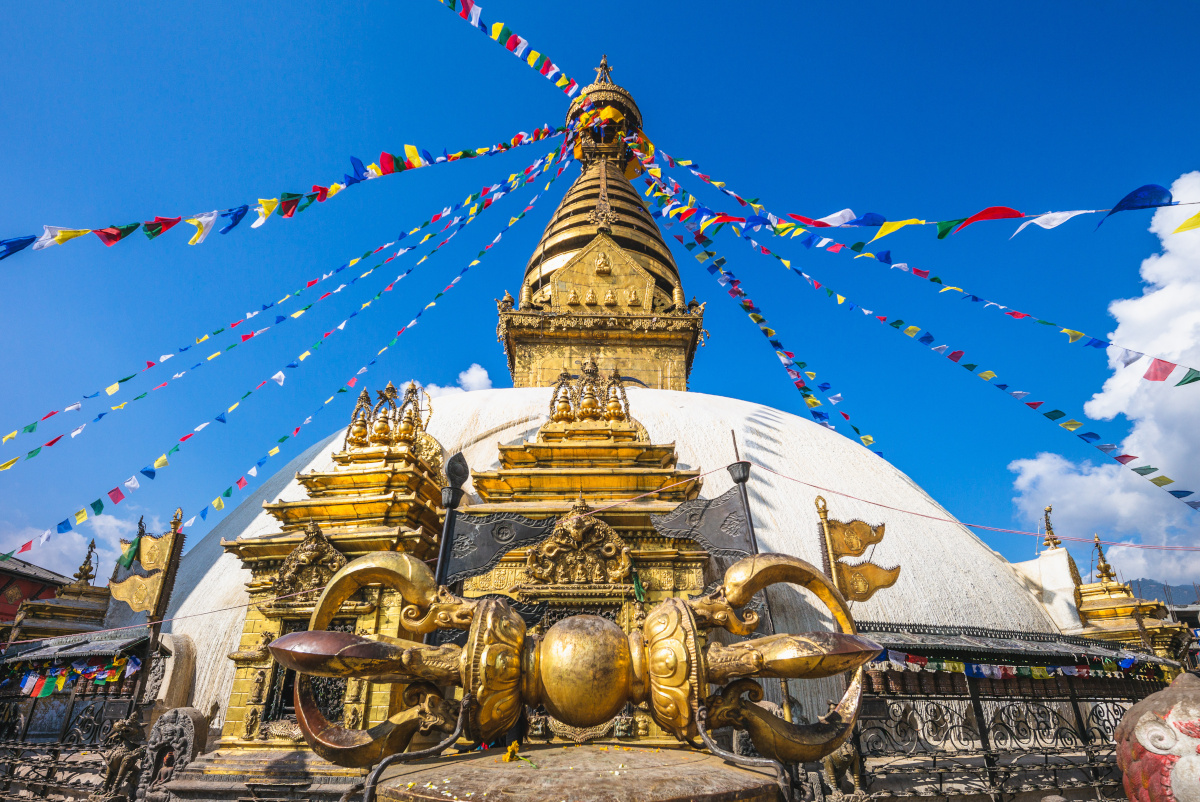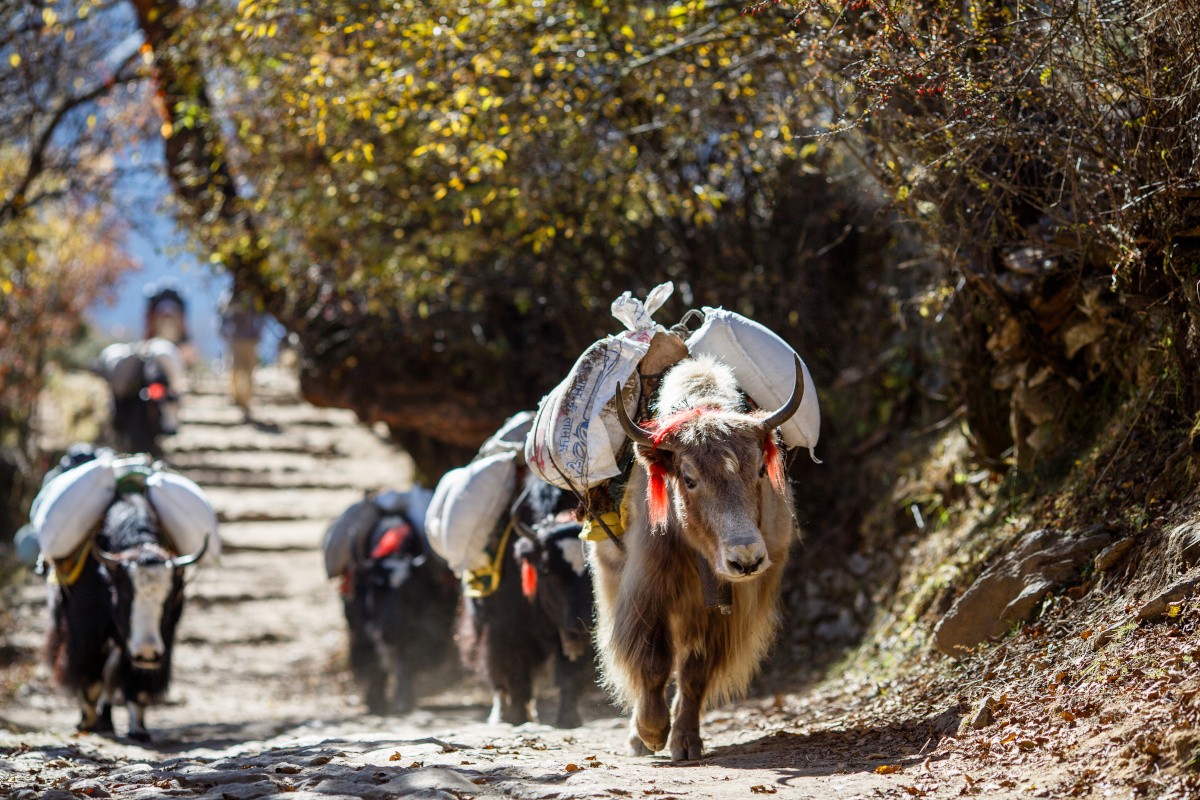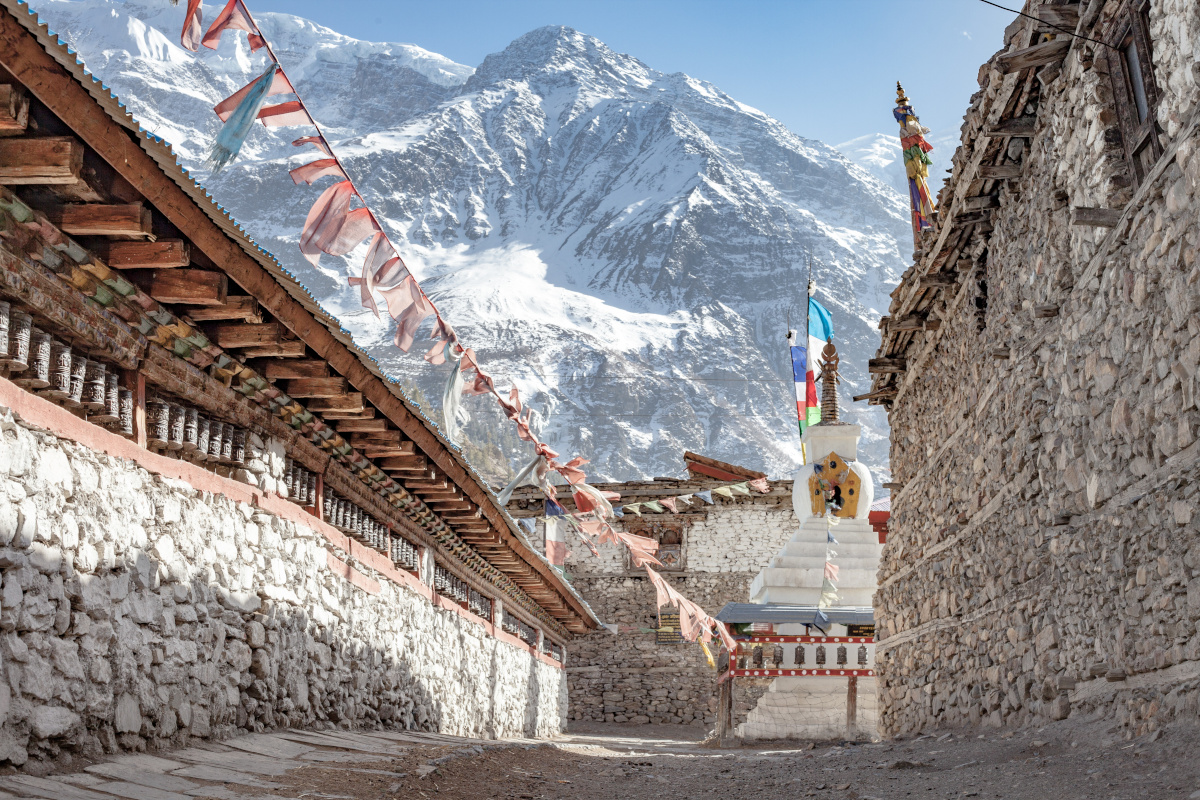
Nepal Travel Insurance: What You Need to Know Before You Go
Reach the Pinnacle of Adventure in Nepal, with the best trip insurance from Redpoint
But there are also amazing off-the-beaten-path hikes in places like Langtang Valley, as well as more popular routes in the Annapurna Region. And don't forget the vibrant capital of Kathmandhu, as well as countless holy and spiritual sites, such as Lumbini, the birthplace of Buddha.
That said, a trip to Nepal certainly comes with some elevated travel risks — especially if you plan on doing any high-altitude trekking or exploration while you're there. There are numerous situations where you might need travel insurance, such as emergency medical insurance and emergency evacuation coverage if you have an accident during your climb.
Read on to learn about the unique health and safety risks in Nepal to know before you go — and the travel insurance you'll need for the best coverage on location.

Health & Safety in Nepal
For travel tips and the most up-to-date information on Nepalese health and safety, consult the U.S. Department of State’s travel advisory for Nepal before you go, as well as the country-specific guidance from the Centers for Disease Control and Prevention (CDC).
To enable the State Department to reach out in case of emergencies, and to receive timely updates on health, weather, safety, and security in your destination, U.S. travelers should also register for the Smart Traveler Enrollment Program (STEP) before departure.
In general, Nepal is a safe country with low violent-crime rates. However, petty crime does occur in tourist areas, like Thamel and Pokhara, as well as on popular trails. Travelers should also be aware of popular scams, such as overpriced taxis and fake or inexperienced guides. It’s always best to always use licensed, reputable guides that have been recommended by someone you trust.
Before your trip to Nepal, make sure you’re up-to-date on routine vaccinations, including measles, mumps, and rubella (MMR), tetanus, hepatitis A and B, rabies, and typhoid. Waterborne illnesses, like diarrhea, cholera, and giardia, are common. To minimize your risk, drink only bottled or purified water, and avoid raw or undercooked food.
However, the primary health risk to adventure travelers in Nepal is altitude sickness, so make sure you’ve adequately prepared for high-altitude climbs at home to avoid a serious oops on location. Once you’re there, gradually ascending to higher altitudes is essential, as is staying hydrated. If you experience symptoms of serious altitude sickness — such as shortness of breath at rest, chest pain and tightness, or extreme fatigue — seek medical attention immediately.
In Nepal’s jungles and national parks, you may encounter tigers, rhinos, elephants, and leopards. Trained guides will advise you on how to stay safe in these encounters, so always seek out and follow their guidance. You’ll also want to take preventative measures, such as insect repellent and long-sleeved clothing, to avoid mosquitoes and leeches in forested areas.
When it comes to natural disasters, you should also be aware that Nepal is prone to earthquakes, landslides, and floods, especially during the monsoon season (June to September). Familiarize yourself with earthquake safety procedures, and avoid trekking in risky weather conditions.
Finally, when it comes to road safety in Nepal, most visitors opt out of driving rental cars, due to chaotic road conditions and dangerous roads. Accidents involving buses, motorcycles, and taxis are also common. You can reduce your risk of road accidents by avoiding travel at night, hiring reputable drivers, and taking domestic flights for longer distances instead of making those journeys by car.
Insurance Benefits & Coverage for a Trip to Nepal
The components of any good travel insurance policy are the same. Before you purchase travel insurance, you’ll want to make sure whatever plan you hold includes each type of coverage benefit listed below. That way you’ll be covered, no matter what unforeseen circumstances might come your way in Nepal.
Trip cancellation and trip interruption insurance:
Travel medical insurance:
Emergency medical evacuation insurance:
Baggage and personal belongings insurance:
Trip delay insurance:
Redpoint has a selection of travel insurance plans that offer crucial coverage for every type of trip to Nepal, no matter your activity level or travel needs.
For adventure travelers looking to summit Everest or trek the famous Annapurna Circuit, Ripcord is an extensive travel plan with high coverage limits and enhanced coverage, including $100,000 per person for medical bills related to emergency accidents and sickness and $25,000 for search and rescue.
Redpoint’s other policies provide comprehensive and tailored trip protection for a wide range of situations too, from travel delays to trip interruptions to unexpected medical fees. If you’re sticking to exploring the amazing culture of Kathmandu or exploring Nepal’s religious and cultural sites, Cavalry is particularly suited for urban travel and luxury experiences, while Harbor offers robust coverage for the budget-minded leisure traveler.
You can buy travel insurance for a single trip to Nepal, or purchase an annual policy for multiple trips. Check out our plan options and get a quote today.
FAQs for Nepal Travel Insurance

1. Is travel insurance mandatory for Nepal?
For areas including Everest Base Camp, the Annapurna Circuit, and Langtang, the Nepalese government requires travel insurance that covers high-altitude medical evacuation and rescue. Many trekking permits — such as the TIMS (Trekkers' Information Management System) card — will not be issued unless you have adequate proof of coverage.
2. How much is travel insurance for Nepal?
3. What should your travel insurance cover for a trip to Nepal?
4. Are there any COVID-19 restrictions for travelers to Nepal?
5. What happens if a tourist gets sick in Nepal?
Because Nepal is popular for trekking and climbs, many tourism-related accidents happen in remote areas at high altitude, where facilities tend to be limited. If you need urgent care while on a trek and there are no adequate medical facilities nearby, you may have to be evacuated by helicopter. This can cost upwards of $10,000, which is why you need travel insurance with emergency evacuation coverage.
If you need emergency services in Nepal, dial 100 for police and 102 for ambulance. Redpoint can also be reached for round-the-clock assistance at +1-415-481-0610.
6. Are the hospitals good in Nepal?
If you have a serious condition, or if your medical emergency occurs in a rural or remote area, medical evacuation to a nearby country, like India or Thailand, may be necessary. This is why comprehensive travel insurance is essential for Nepal.
7. What documentation is needed to visit Nepal?
If you're planning to do any trekking while in Nepal's national parks, you may also need a TIMS card and/or a restricted-area permit, depending on your planned route.
8. Is Nepal safe to visit?
Violent crime is rare in Nepal, especially towards travelers, but pickpocketing and other types of petty crime do occur in Thamel, Kathmandu's tourist district.
If you plan to do any high-altitude trekking — as most tourists to Nepal do — there are other risks involved. Altitude sickness, unpredictable weather, landslides, and medical emergencies in remote areas are all risk factors, so it's essential to have travel insurance for your trip to Nepal.
9. Is Nepal safe for female travelers?
10. How do I contact the U.S. Embassy in Nepal?
U.S. Embassy Kathmandu
Maharajgunj, Kathmandu
Tel: +977-1-423-4000
Redpoint Travel Protection Is Here to Help
Redpoint is known for comprehensive and easy-to-understand policies to suit any trip, from soaking up urban culture to conquering the world’s highest mountains, so you can travel with confidence. Explore our travel insurance plans — Ripcord, Cavalry, and Harbor — and get a quote for your next trip today.

